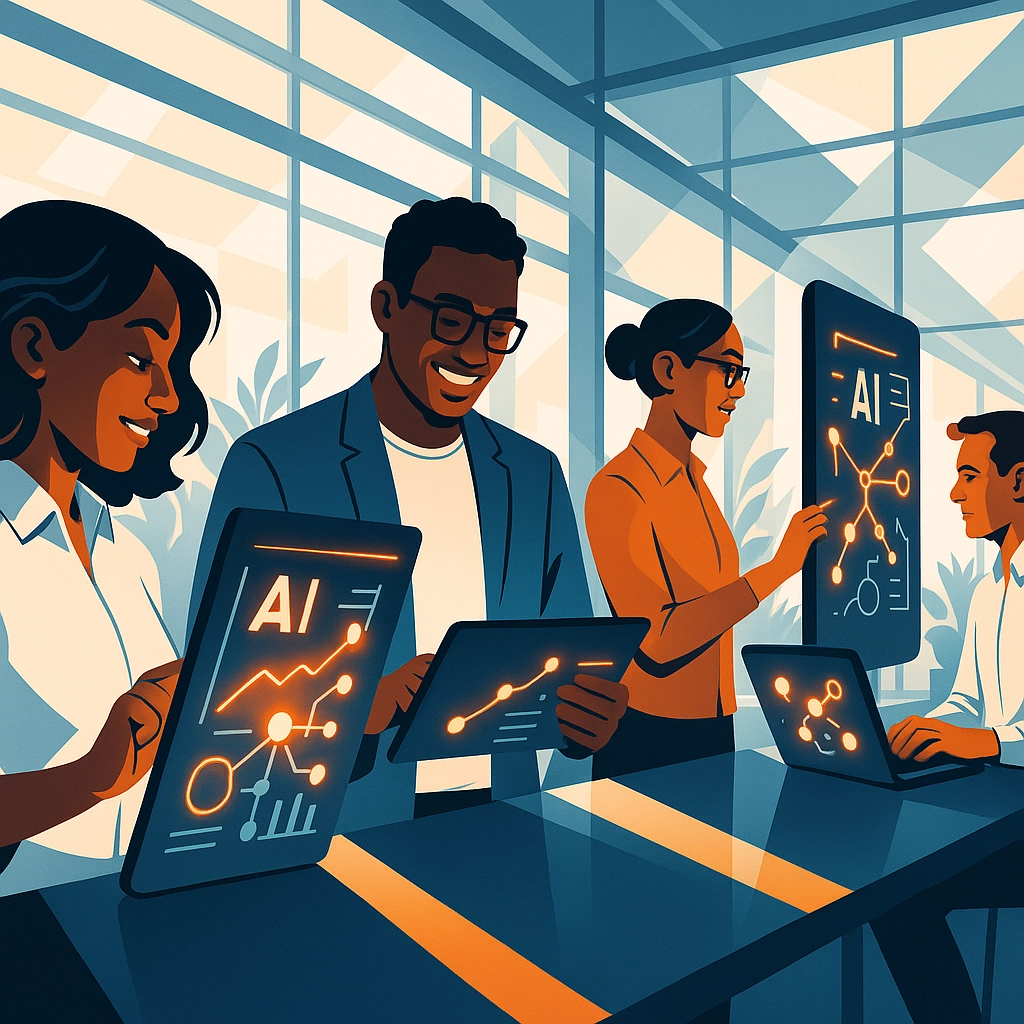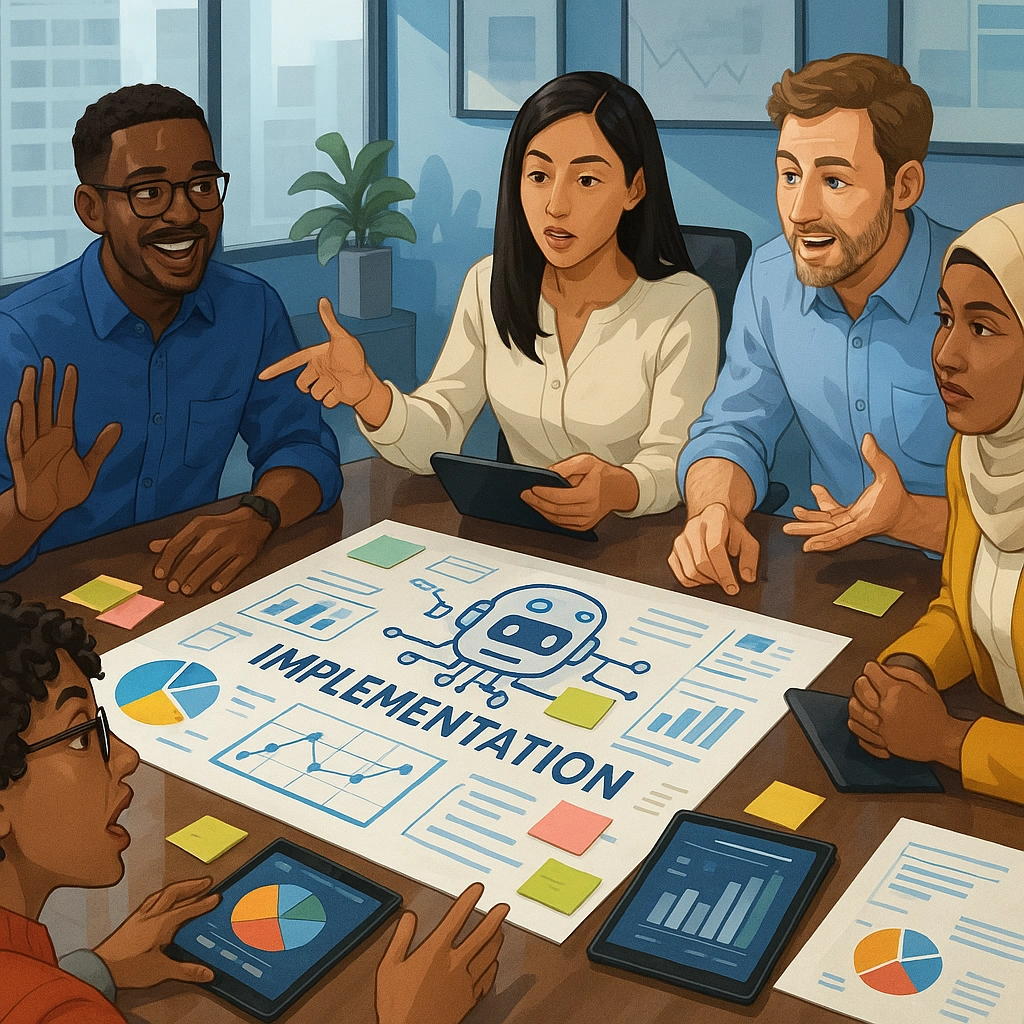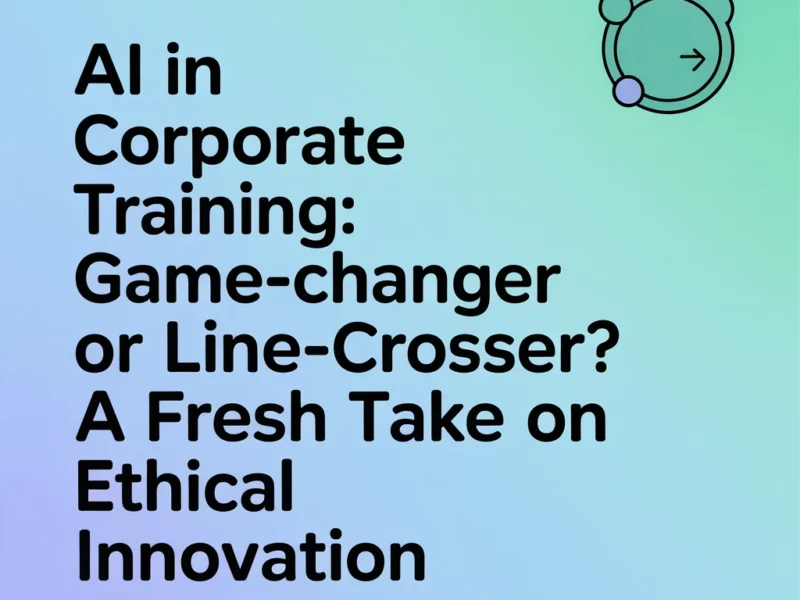Have we reached a point where the line between empowering people and automating them has disappeared in corporate training thanks to AI—or is the line just shifting? That’s the central question organizations are wrestling with as artificial intelligence moves from being a buzzword to a backbone of professional development. Let’s take a look at what’s really happening in the world of AI-powered corporate learning, where innovation and ethics continually trade the driver’s seat.
AI’s Outsize Impact: Personalization and Performance
When it comes to delivering training at work, most of us can spot a “one-size-fits-all” model from a mile away, and let’s be honest, hardly anyone thrives in those. With AI’s arrival, we’re now seeing laser-focused learning paths that adapt to individual strengths and knowledge gaps after just a few user clicks.
AI-powered systems don’t just track which module you finished—they can analyze your responses, figure out where you’re slipping, and serve up just the right content at the right time. It’s not fantasy: McKinsey reports that AI-driven learning can boost knowledge retention rates by up to 40% compared to standard methods. 
Beyond better recall, AI also means faster and more flexible rollouts. L&D teams can now create interactive FAQs, chatbots, and even video lessons with just a few prompts. AI tools are churning out training content at speeds that let organizations respond quickly to changes—think onboarding hundreds of employees across the world in a few clicks instead of stretching it out for weeks.
What’s genuinely game-changing isn’t just automation—it’s access. Subject matter experts, who may not have years of instructional design experience, can lean on AI to shape their deep knowledge into effective training. AI democratizes learning creation, breaking down silos and inviting more voices to the training table.
The Not-So-Hidden Costs: Ethics and Human Connection
Of course, these advancements come with their fair share of questions and cautions. First up: privacy. AI relies on collecting lots of employee data—performance stats, feedback, engagement metrics, and sometimes even behavioral patterns. Sure, this data helps make learning more effective, but it also raises big questions about boundaries. At what point does helpful personalization become a little too much like surveillance?
Then there's bias. AI learns from old data, and if that info is skewed or based on outdated norms, it can quietly reinforce inequality—just faster and at a bigger scale. So even if you feel you're getting a super objective and efficient training plan, what if the AI is actually steering opportunities away from certain groups without anyone noticing?
And finally, let’s not lose sight of the people factor. At its best, training goes way beyond just delivering information—it’s supposed to spark new ideas, connect team members, and help everyone grow. An AI coach is always “on,” but it can't quite match the encouragement, empathy, or inspiration you get from a fantastic trainer or an understanding manager. 
Finding the Balance: Responsibility Meets Innovation
So how do forward-thinking organizations strike the right balance, turning AI into a true asset rather than just another shortcut? The smartest companies are getting really intentional with their tech rollouts, putting ethical review steps at every stage. Think of it like a pre-flight checklist: regular audits of what the AI is actually doing, documenting how and why features are developed, and making space for open (and sometimes tough) conversations about the trade-offs.
It’s also about who’s at the table. If only a narrow group is designing or implementing these tools, you risk missing blind spots—like cultural hiccups or accessibility gaps that a more diverse team would pick up on right away. Getting a broad mix of voices involved isn’t just the right thing to do—it’s how you catch those “uh-oh” moments before they turn into real problems.
Transparency sets the tone. Employees deserve to know what data is collected, how it’s used, and what say they have in the process. There should be easy ways for folks to share feedback or push back when something doesn’t feel right. Keeping this feedback loop open is how you make sure AI stays accountable—and that it always centers humans, not just the latest algorithms. 
And when things go a little sideways (because let’s be honest, tech never goes perfectly)? You need a backup plan. Have clear steps for what to do if the AI is misused or just plain gets it wrong—so things stay on track and everyone has a safety net.
AI Amplifies Values—It Doesn’t Replace Them
Here’s the thing: AI’s superpower isn’t replacing your organization’s values—it’s amplifying whatever’s already there. Companies that already prize fairness, transparency, and learning are the ones using AI to truly level the playing field and break down barriers. But if ethics aren’t already a priority, AI can sometimes make existing problems even bigger (and sneakier).
If you want AI to really work for your people—not just your profit margins—focus first on building a rock-solid ethical foundation. Run regular training for your dev teams, keep the lines open for honest employee feedback, and stay curious (and cautious) about risks like bias and data privacy. Innovation should be exciting, not an excuse to skip the important conversations.
The organizations making real progress aren’t thinking “humans versus machines.” They’re all about smart partnerships—letting AI take on the repetitive, data-heavy stuff, and freeing up people for creative thinking, mentorship, and real connection. That’s how you get the best of both worlds: content that’s always fresh and tailored, plus leaders and trainers who still do what they do best—encourage, inspire, and be there for the team.
Takeaways for Leaders: How to Act Now
If you’re thinking about bringing AI into your corporate training mix (or you’re already testing the waters), here’s a quick checklist to keep things on track:
- Be upfront about what data gets collected, how it’s used, and what privacy rights folks have.
- Mix up your teams—bring lots of different perspectives into the AI decision-making and review process.
- Make regular ethical reviews part of the deal; don’t let the system just run on autopilot.
- Keep the conversation going—make it easy for employees to share their experiences (good and bad) with AI-driven learning.
- Have a game plan ready if problems pop up, whether it’s bias, privacy issues, or just weird recommendations.
- Most of all: Remember that AI is there to help people grow, not to replace all the best parts about human learning.
Organizations that find the sweet spot between innovation and responsibility see AI as more than just another tool. It’s a big chance to reinforce your values and scale development—without losing the heart or the humanity that makes your team great.
Curious how ethical AI could energize your organization’s learning culture? Connect with BHS & Associates here. Let’s make technology work for your people, while keeping their growth and wellbeing at the center—because that’s where real progress starts.



 Human Touch vs. High Tech: The Future of Coaching in an AI World
Human Touch vs. High Tech: The Future of Coaching in an AI World